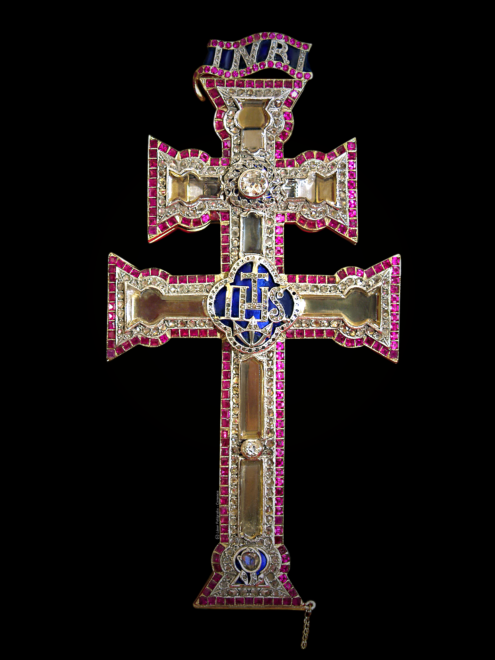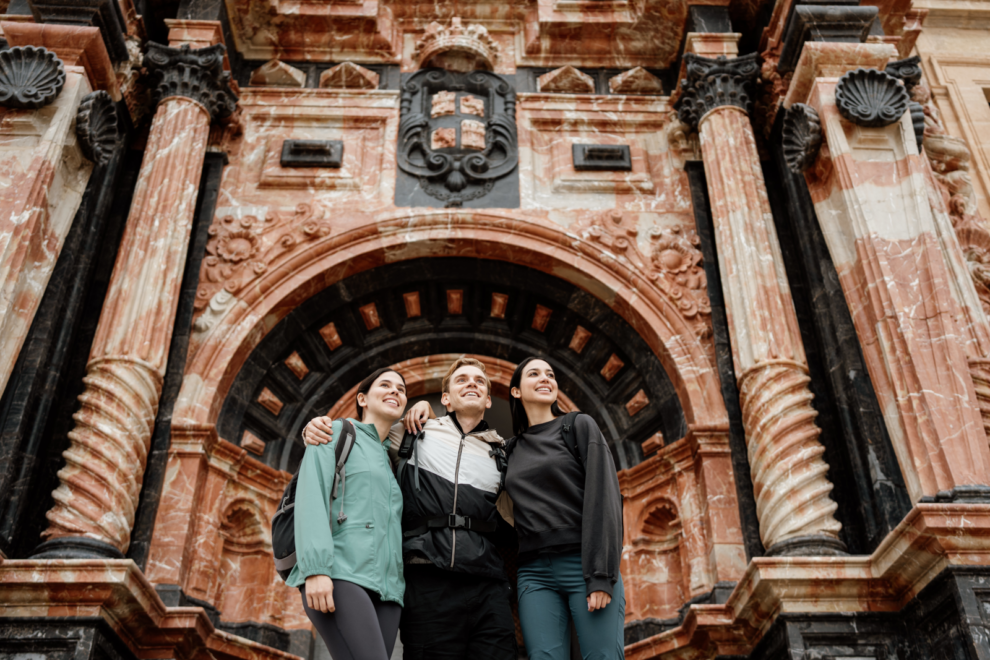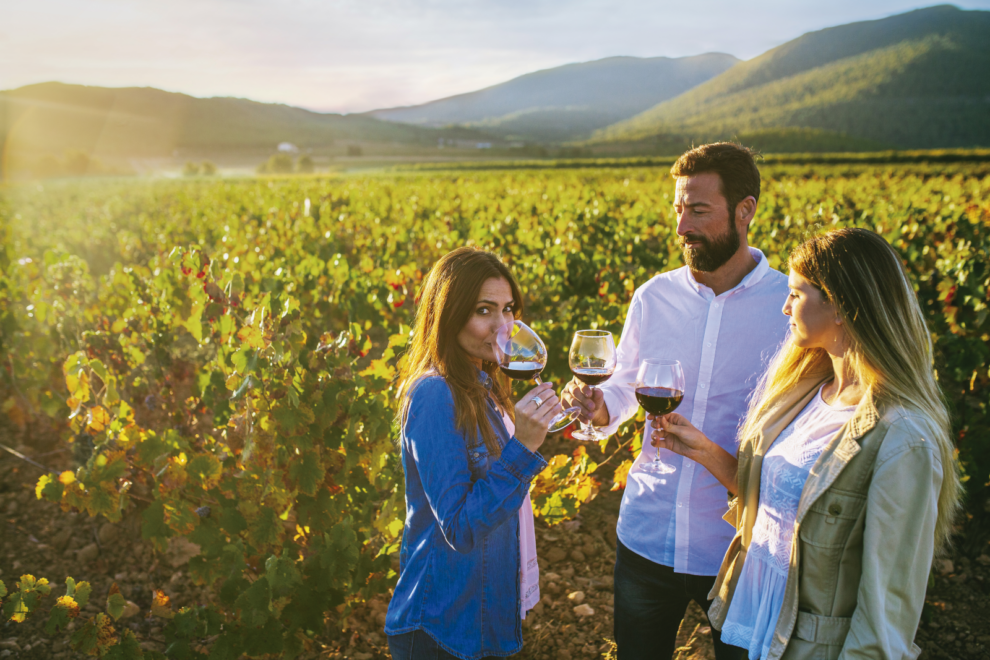

For those who have never been to the Murcia city Caravaca de la Cruzthis year 2024 offers an unrivaled opportunity to return to Believe in the extraordinary and welcome an unforgettable year full of inspiration, faith and culture. And next year, Caravaca de la Cruz will celebrate its anniversary year, demonstrating its status holy city of Christianity near Jerusalem, Rome, Santiago de Compostela and Santo Toribio de Liebana..
This city, located in the interior of the Murcia region, is a magical place where history and legend intertwine offering a wide cultural heritage that attracts travelers from all over the world. The reason for this mythical origin and its importance as a holy place is due to the presence of one of the most important relics of Christianity: the Most Holy and True Cross, which guards lignum cross, that is, the remains of the tree with which the Romans crucified Jesus Christ. It is currently located inside a two-handed reliquary and is the emblem of the city.
Legend of the Caravaca Cross
Legend says that in 1231the priest called Gines Perez de Chirinos He entered Muslim territory to preach the Gospel. There he was arrested and brought before the ruler. Zaid Abu Zaid, who asked him, out of personal interest, to celebrate Mass in his presence and thus learn more about the Christian rite. Once the priest had gathered everything he needed to celebrate the Eucharist, he had to stop it when he realized an important oversight: the main symbol of Christianity – the cross – was missing. The Muslim ruler, who was watching the mass with his family, asked him what the problem was, to which the cleric replied: “There is no cross.” At that moment Zayd Abu Zayd saw two angels lay a cross on the altar“Isn’t that where it’s from?” – he said. According to legend, this event caused The Muslim ruler and his family eventually converted to Christianity.
Cross as a symbol and Wine Horses
The cross served as a flag and talisman to protect the city from Andalusian attacks, especially those carried out by Muhammad ibn Nasr, Emir of Arjona and Granada. Thanks to this, Caravaca eventually consolidated as bastion of the Spanish-Islamic borderthereby increasing his legend.

One of the mythical stories about Christian Defense of Caravaca It is said that in the 13th century, during the siege of the castle, the Templars had to face a water shortage when the cisterns of the fortress became polluted. A group of brave souls managed to go out in search of water in the springs, but they were also poisoned by the besiegers. The only solution was to load several wineskins of wine onto the horses. Upon returning to the fortress, having successfully broken through the enemy line, They blessed the wine with the True Cross and they gave it to the sick, who were miraculously healed. In addition, they poured some of the wine into tanks, cleaning them. This action allowed them to resist the siegeand finally the Muslim forces retreated.
That’s why, every May 2 In honor of the traditional Wine Horse Festival, the Caravaca equestrian clubs decorate a horse and select four representatives to race on the slope leading to the Vera Cruz sanctuary.
The holiday starts at April 30 With Night of the crumbs, when the streets are alive with brass bands, batucadas and the color of peñas migueras who gather in the Plaza del Hoyo to choose the best. He 1st of May Celebrated Flower offeringHe Bareback horse racing And Mantle exhibition, authentic works of art woven from silk, silver and gold threads, which are used to decorate horses the next day. May 2 is the main day of the holiday, with the famous Wine Horse races.
Jubilee year and plenary indulgence
They have been produced since the 14th century several bulls of indulgence for those who visited the chapel in which the Cross was kept. The first surviving ones were made public by Clement VII of Avignon in 1379 and 1392. Pius V was the first pope to grant indulgences for this reason in 1572. These indulgences were later extended by Gregory XV in 1622 and confirmed by Urban VIII (1623). -1644), Clement X (1670-1676) and Innocent XII (1691-1700).

January 2, 1981, at the request of the Bishop of Cartagena Saint John Paul II He gave the city a jubilee year. Later, in 1998, responding to a request from the Bishop of Cartagena and the Royal and Illustrious Fraternity of Saints and Vera Cruz of Caravac, The Pope granted the eternal jubilee year every seven years in the sanctuary. This cycle began in 2003 and is awarded during May 3rd and September 14th or when performing group pilgrimages. complete indulgence, that is, the absolute forgiveness of God and the forgiveness of any debt arising due to our sins. Thanks to this gesture, Caravaca became one of only five cities in the world to receive the honor of being considered a “sacred city.”
Pilgrimage to Caravaca de la Cruz
Since Caravaca was recognized as a holy site, Christian pilgrimages have continued, making the Basilica of the True Cross one of the greatest attractions in the Murcia region, both for Catholics and for any visitor.

There are several possible roads to reach the city, among which the Pyrenees, Apostol or San Juan stand out, although perhaps one of the most visited is the Levante Way, which runs along Northwest Greenway. The route, which starts in the Alicante city of Orihuela, can be completed in five stages ranging from 20 to 26 kilometers, with stops in the capital of Murcia, Alguazas, Mule and Bullas. An accessible pilgrimage suitable for all walkers, which will also allow you to discover the natural and scenic beauty of the Murcia region, as well as its tourist and gastronomic attractions.
Source: El Independiente